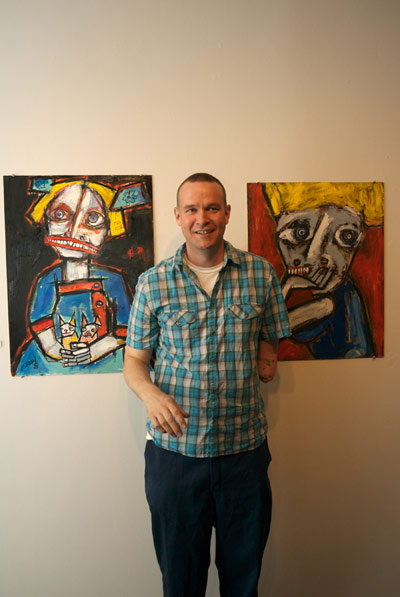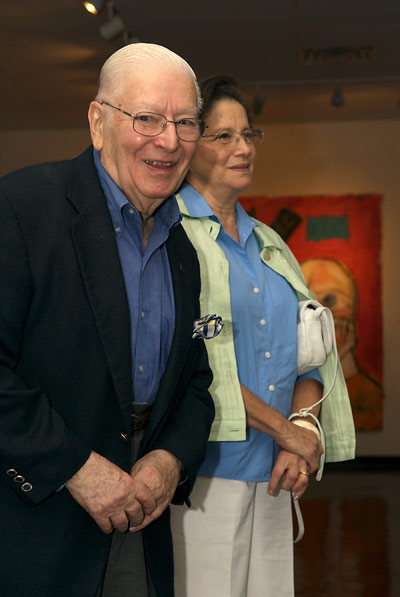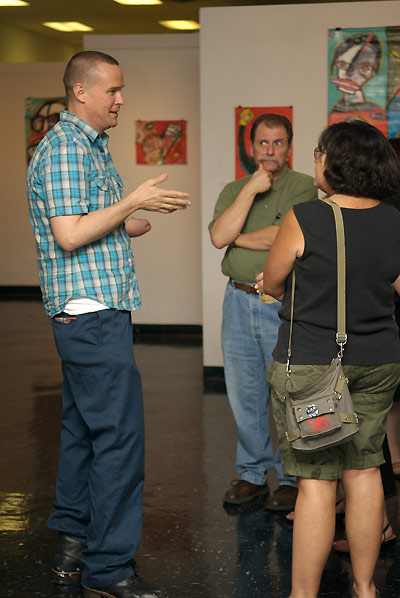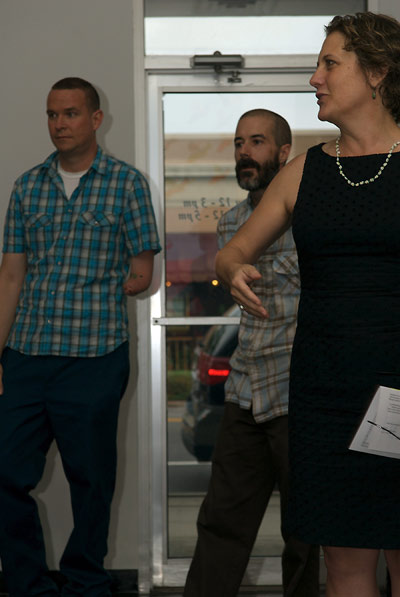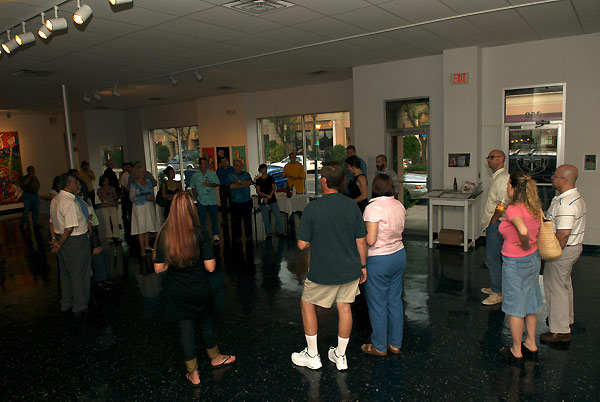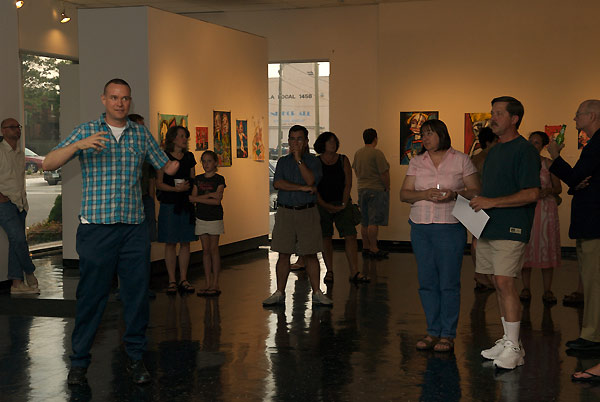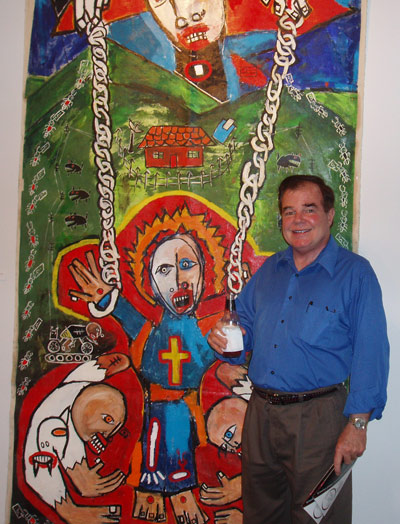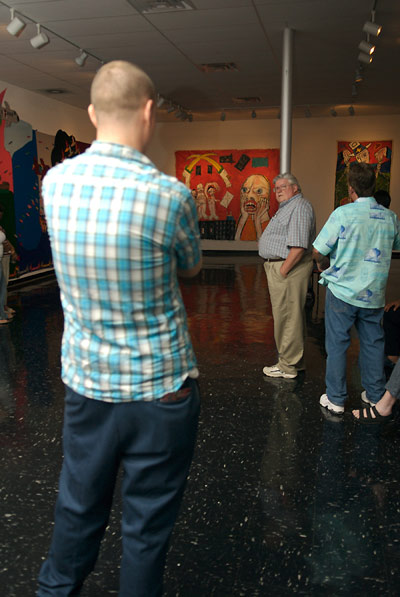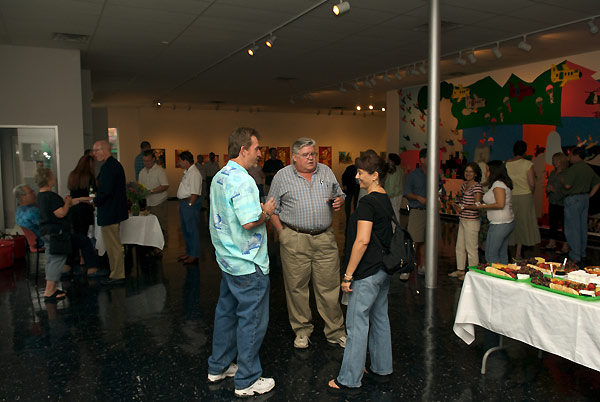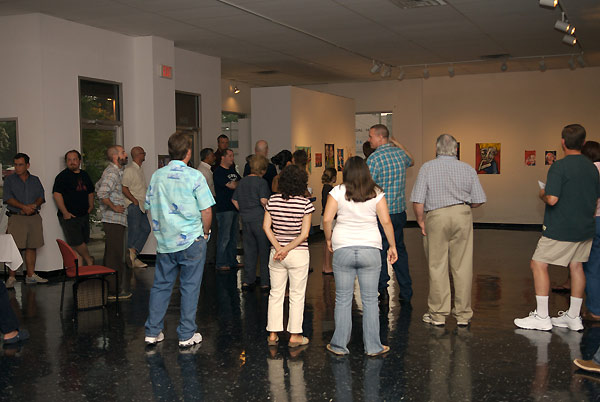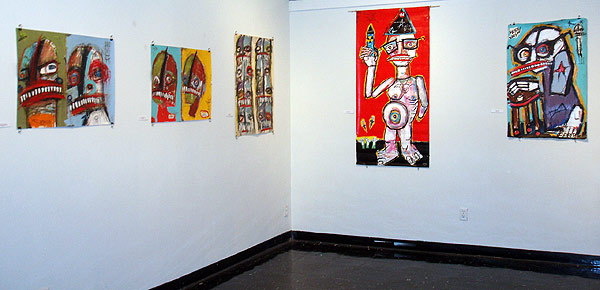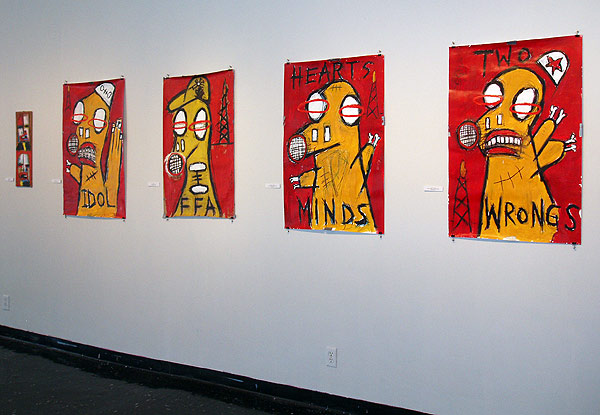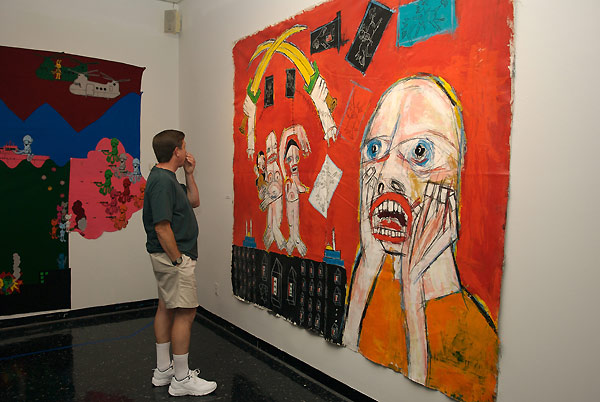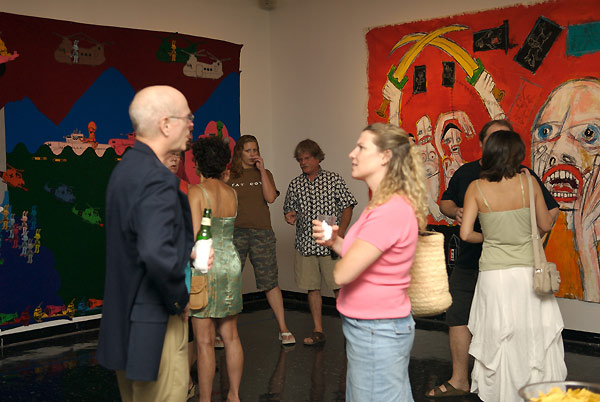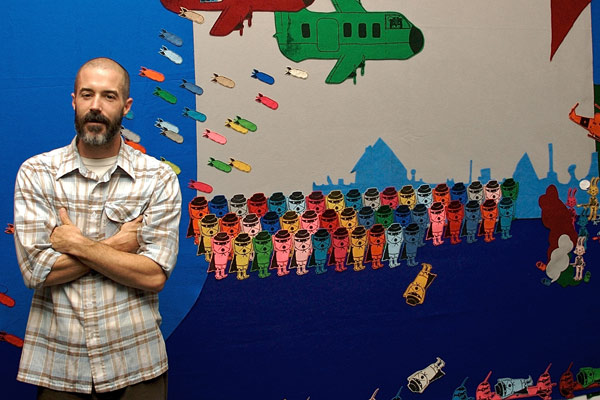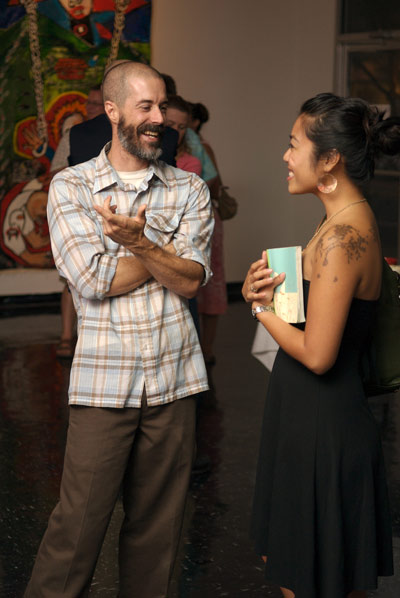this page:
PAX ATTAX show with Chris Dacre and Matt Sesow
Old Dominion UniversityNorfolk, VA: July - August 2007
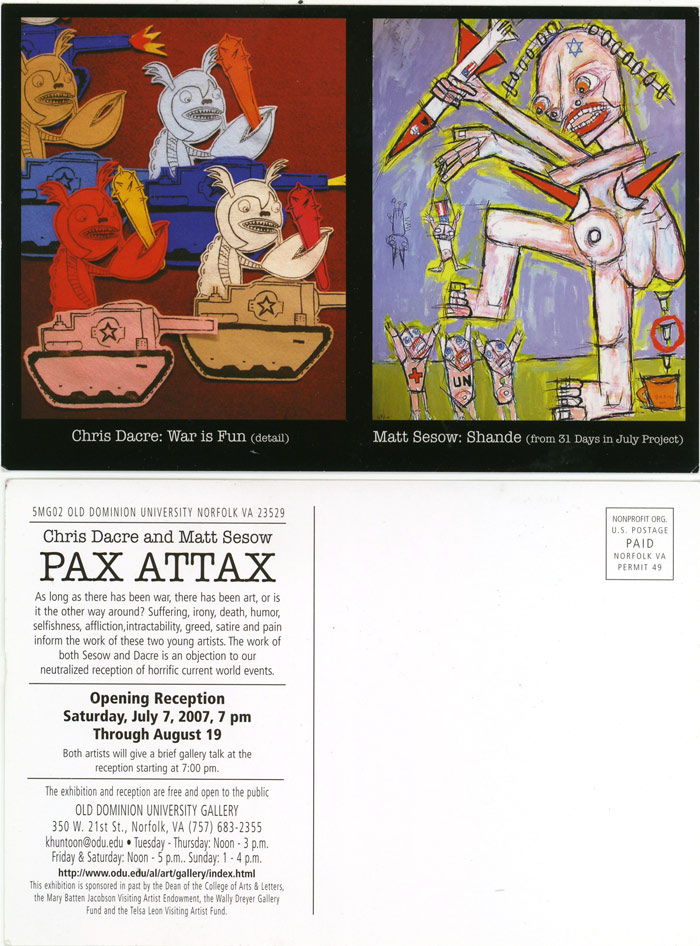

Two Brave Young Men Say it with Art
By Hannah Serrano
Lining the walls of the ODU Gallery are the intensely colored
works of Matt Sesow and Chris Dacre, two young men whose sardonic responses to
the state of American politics are expressed in their powerful works. Both wore
jeans, cowboy shirts and easy smiles to the opening of their exhibition. It was
clear they were just two Midwestern guys, making some art and talking about
issues. Neither carried the superiority or sense of irony that some young
artists are wont to possess. In fact, they were each unassuming, humble and
real. That combination of open, straightforward, almost na•ve attitudes about
art, and the rawness and edginess conveyed in the pieces, is disarming.
Sesow, who hails from rural Nebraska and admits that he initially
became interested in art to impress a girl, lost one of his arms when he was
struck by an airplane propeller as a child. The trauma of that event is
expressed in his work again and again, with shackled and amputated figures
representing not only his own trials but the ideas of helplessness, pain, and
struggle—as seen in the two large-scale works, Collateral Damage (Living
Hell) and HeÕs Got the Whole World in His Hands (With Entangled Ants). The
serial quality and color in SesowÕs other, smaller-scale paintings are
admittedly Warhol-inspired. And his project, 31 Days in July, for which he
began a unique painting each day in July of 2003 in response to articles on the
front page of the Washington Post, is reminiscent of the contemporary Japanese
artist On Kawara, who is similarly activated by newspapers and the passage of
time. SesowÕs clearest artistic forebear, however, seems to be the German
Expressionist Ernst Ludwig Kirchner. Kirchner, who depicted himself in his art
with an amputated hand, also created energized, intense art that responded to
war (in his case, WWII) and raw human emotion.
Dacre, who was born in a small Ohio farming community and later
served in the U.S. military, presents a 32 foot by 12 foot installation piece,
entitled War is Fun. The felt collage creates a vivid scene of doll-like
paratroopers, tanks, helicopters, and imaginary characters embroiled in battle.
If you can imagine a brightly colored Guernica populated by cartoonish,
Nintendo-like figures, you wouldnÕt be far off. The childlike quality inherent
in the work is the very thing that makes DacreÕs political statement so potent.
Though not a conscious decision on the artistÕs part, DacreÕs use of felt
material, political activist agenda and military background suggest an
inheritance from the artist Joseph Beuys, a German artist of the Ô60s. Felt
became a key material for Beuys after he was supposedly revived to health by
tribesmen, who enveloped him in animal fat and felt, after being shot down as a
pilot in World War II.
Here they are—two young Americans, a modern-day Kirchner and Beuys, bringing a wholly authentic, highly charged and highly intellectual approach to Outsider art. This is what exciting contemporary art is all about. ¥
